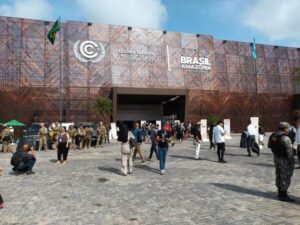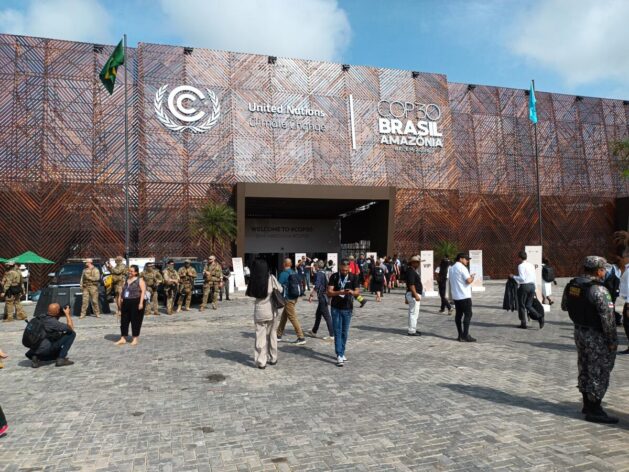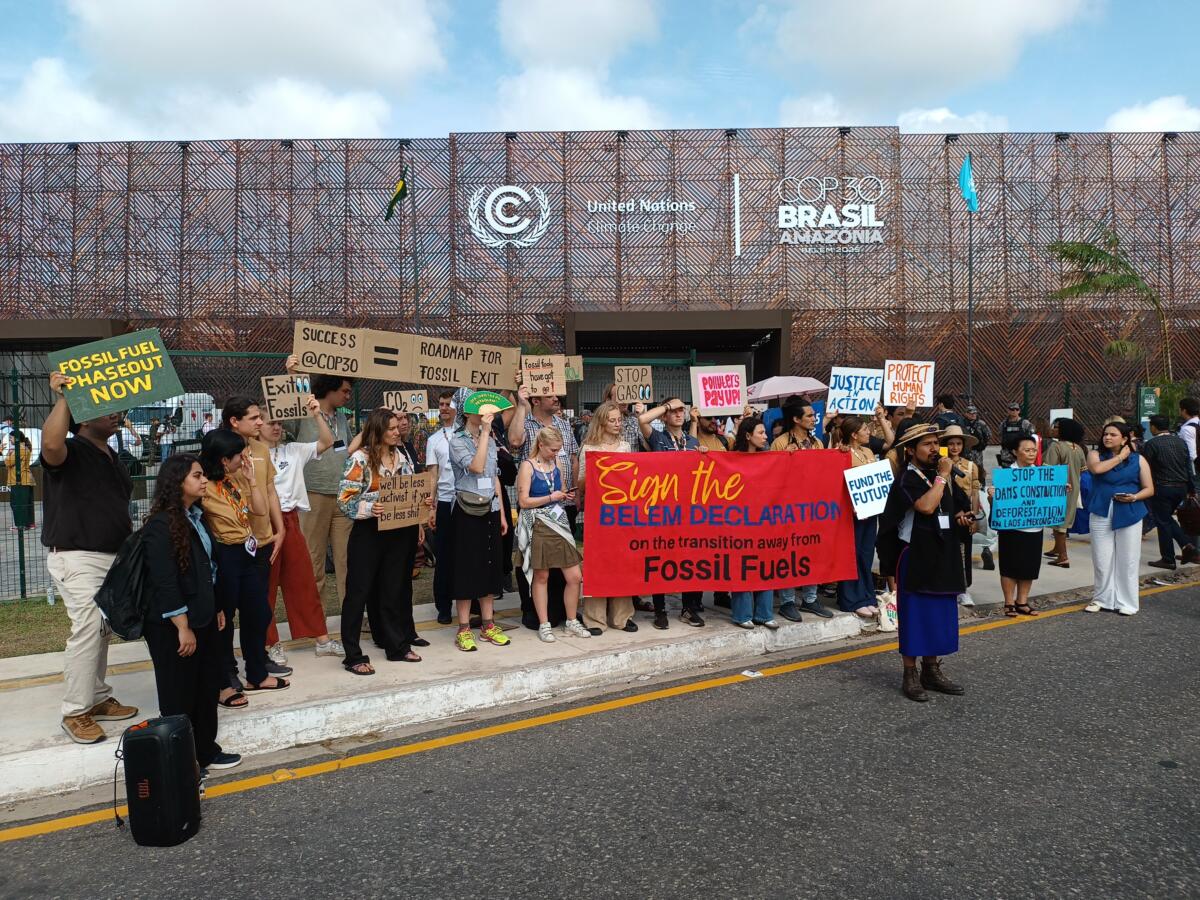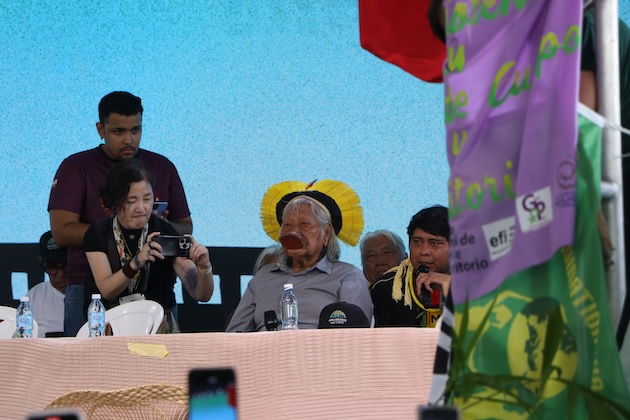
Climate Action, Climate Change, Conferences, COP30, Economy & Trade, Environment, Food and Agriculture, Food Security and Nutrition, Food Sustainability, Food Systems, Global, Green Economy, Headlines, Natural Resources, Sustainability, Sustainable Development Goals, TerraViva United Nations

In the midst of the COP30 climate talks, consensus will depend on recognizing that climate action and protecting livelihoods must advance together.

Delegates met at the Global Climate-Smart Agriculture Conference in Brasília before the COP30 climate talks. Credit: 2025Clim-Eat/Flickr
– The language of agricultural sustainability changes like the seasons—from “climate-smart” to “regenerative,” “agroecological,” and “nature-positive.” Each term reflects good intentions, but the growing list risks duplication, confusion and delays.
The recent CSA Conference in Brasília gathered leaders from policy, science and finance ahead of COP30 to focus not on buzzwords but on the shared foundations of sustainable food systems, which is all the more important in the Grave New World. For all the various theories of change, many share the same principles of soil health, crop innovation, inclusive finance and resilient livestock production.
In the midst of the COP30 climate talks, consensus will depend on recognizing that climate action and protecting livelihoods must advance together. Leaders must challenge themselves to measure success not only in emissions reduced, but also in the quality of life sustained by a thriving and resilient rural economy. With Brazil’s COP presidency determined to accelerate agreements into action, the challenge now is to accept and advance context-specific approaches in pursuit of a shared goal.
At present, fragmentation continues to divide institutions, donors, NGOs and producers, with competing ideologies slowing progress toward sustainability at the speed and scale required. For example, while a vast number of organizations are currently backing the concept of regenerative agriculture, others tread the paths of sustainable intensification or climate-smart agriculture. But some of the practices, such as agroforestry, could fall under each of these concepts.
And the Koronivia Joint Work on Agriculture (KJWA), established prior to COP26, has been succeeded by Sharm el-Sheikh Joint Work on the Implementation of Climate Action on Agriculture and Food Security and yet farmers are still waiting for clear national strategies to emerge from years of workshops and working papers. While the principles underpinning these joint work programs are sound, they have not generated action at the speed needed.
On the other hand, the six CSA Conference themes—from soil health and crop innovation to finance and policy—offer a fundamental framework around which there is already much agreement and can deliver results under whichever buzzword it is categorized. The themes also reflect the priorities of Brazil’s Action Agenda and ABC+ Plan, highlighting practical areas of consensus.
Brazil’s experience offers tangible examples of how shared priorities can move from discussion to delivery. The ABC+ Plan (2020–2030) forms the backbone of the country’s low-carbon agriculture strategy, integrating sustainable practices like no-till farming, pasture recovery and biological nitrogen fixation into a coherent national framework. It represents a direct contribution to the COP30’s Action Agenda’s agricultural pillar, transforming abstract goals on soil health and productivity into measurable outcomes.
Building on this, Brazil’s RENOVAGRO is the financing arm that enables the implementation of the ABC+ Plan, demonstrating how public policy can activate private investment to move all Action Agenda ambitions forward together. By tying credit eligibility to verified adoption of low-carbon practices, the program allows farmers to commit to transitions that would otherwise be out of reach. This realizes the ABC+ Plan’s policy objectives and shows that progress depends not necessarily on new ideas, but on acting decisively on the systems that already work.
At COP30, the challenge is not to settle on the right language but to sustain the right actions—whatever this might look like according to local circumstances and resources. Progress depends on scaling what we already agree on: sound policies, accessible finance that doesn’t exclude vulnerable populations and resilient food systems that keep production within environmental limits. The next phase must prioritize implementation over invention.
Leaders have an opportunity to move from promises to performance. The task ahead is to scale what already works—not to define new concepts, but to deliver proven solutions faster.
Brazil’s example shows that integration works better than focusing on the continued search for a universal solution. There is no single path forward, only a combination of context-specific approaches bound by diplomatic agreement and sustainable financing.
By focusing on fundamentals, we can avoid the paralysis of competing definitions and begin to act collectively by applying the policies and practices we know work in ways that fit local realities.
Ana Maria Loboguerrero, Director, Adaptive and Equitable Food Systems at Gates Foundation
Dhanush Dinesh, Chief Climate Catalyst at Clim-Eat
IPS UN Bureau


















